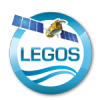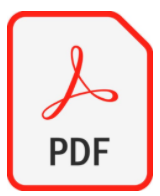Understanding flood processes in the Congo River Basin and their large-scale triggers: the caseof the 2024 event using SWOT
Encadrants:
Fabrice Papa, LEGOS
fabrice.papaNO SPAM -- FILTER@NO SPAM -- FILTERird.fr
+33 (0)5 61 33 47 15
Sly Wongchuig, LEGOS
Adrien Paris, HydroMatters
Daniel Moreira, GET
Sujet de Stage
Context:
The overall goal of this internship project is to better understand the recent extreme flooding that occurred in early 2024 in the Congo River Basin (CRB) using remote sensing, specifically satellite altimetry, including newly available Surface Water Ocean Topography (SWOT) data.
The CRB is one of the most important river basins in the world due to their strong interactions between the surface and the atmosphere, playing a crucial role in the local, regional, and global hydrological and biogeochemical cycles (Nogherotto et al., 2013). In addition, the CRB constitutes a major water resource for the human population livelihood within the basin, with 80% of the population relying on the CRB inland waters (Inogwabini, 2020), making them particularly vulnerable to future changes in the water cycle. For instance, extreme events such as droughts and floods, have been exacerbated in the region during the last decades, both due to anthropogenic activities and climate change impacts (Karam et al., 2022). Affecting more than 10 million people since 1960, evidencing the vulnerability of the CRB to events, particularly the large floods of 1960, 1997 or 2020. It has also been evidenced that the seasonality of floods is particularly associated with large-scale phenomena such as the ITCZ or ENSO, involving El Niño or La Niña events (Bola et al., 2022; Wongchuig et al., 2023). In particular, the recent flooding in the CRB in early 2024, considered, according to the World Meteorological Organization, to be the worst flooding already recorded in at least 60 years. In which, according to the United Nations Office for the Coordination of Humanitarian Affairs (UN OCHA), approximately 1.8 million people within the 9 countries covered by the CRB were affected. Despite its major importance, the CRB is one of the least studied river basins aggravated by the lack of comprehensive and maintained in-situ data networks thus a poor monitoring that prevents a proper understanding of its large spatial and temporal hydrologic- hydrodynamic variability (Alsdorf et al., 2016; Laraque et al., 2020). This is mainly due to the challenging access to vast central swamp areas, poor terrestrial infrastructure, and the basin’s division across
several countries affected by recurrent conflicts, insecurity, and persistent health issues (Bola et al., 2022). However, satellite-based remote sensing now offers unprecedented capabilities to observe the terrestrial water cycle for groundbreaking developments and scientific advances (Fassoni‐Andrade et al., 2021). Among these observable variables from space, river water level is important as a potential predictor of flooding, for example, and with thousands of virtual stations providing information on its variation, especially using nadir altimetry (Cretaux et al., 2023; Silva et al., 2010). However, there are still some limitations in terms of spatial and temporal coverage, which can now be overcome with the Surface Water and Ocean Topography (SWOT) mission with better accuracy and coverage due to the characteristics of its interferometric sensor (Fu et al., 2024; Rodriguez et al., 2017).
Objectives of the stage:
This new context brings new opportunities to investigate and reveal the characteristics of surface water dynamics during this 2024 extreme flooding in the CRB. Therefore, it opens new major questions: What has been the spatio- temporal variability of river levels in the CRB? How much is the advantage of using SWOT data compared to radar altimetry in terms of spatial and temporal coverage of the large CRB flood in 2024? How is this spatial distribution of river level impacts related to large-scale atmospheric-oceanic processes?
This is what we propose to explore during this 6-month internship. For this we will use appropriate tools to download, process and analyze remote sensing observations, mainly radar altimetry and SWOT information. Therefore, we expect to have a spatially distributed mapping throughout the CRB of the impact of the 2024 flood and how this 2 characterization is related to atmospheric-oceanic processes. Prospective includes the evaluation of the potential teleconnections with the Amazon basin located on the other side of the Atlantic Ocean, which experienced on of its greatest drought at the end of 2023 (Moreira et al., 2024).
The objectives of this internship are threefold: 1) Provide the first water level characterization of the Congo 2024 flood at large scale by revealing exceptional high river water elevation and its propagation across CRB from space; 2) Assess SWOT observations in the CRB as compared to conventional radar altimetry; 3) Reveal the new potentials of SWOT measurements for hydroclimatic variability and extremes and potential relationships with atmospheric and oceanic processes, including the teleconnections, in a more holistic approach, with extreme events in the Amazon basin.
Expected academic achievements: Training in:
- Basic processes of the hydrological cycle and climate change.
- Data handling of observational information.
- Statistical analysis of data
References:
Alsdorf, D., Beighley, E., Laraque, A., Lee, H., Tshimanga, R., O’Loughlin, F., Mahé, G., Dinga, B., Moukandi, G., Spencer, R.G.M., 2016.
Opportunities for hydrologic research in the Congo Basin. Reviews of Geophysics 54, 378–409.
https://doi.org/10.1002/2016RG000517
Bola, G.B., Tshimanga, R.M., Neal, J., Trigg, M.A., Hawker, L., Lukanda, V.M., Bates, P., 2022. Understanding flood seasonality and flood
regime shift in the Congo River Basin. Hydrological Sciences Journal 67, 1496–1515. https://doi.org/10.1080/02626667.2022.2083966
Cretaux, J.-F., Calmant, S., Papa, F., Frappart, F., Paris, A., Berge-Nguyen, M., 2023. Inland Surface Waters Quantity Monitored from Remote
Sensing. Surv Geophys 44, 1519–1552. https://doi.org/10.1007/s10712-023-09803-x
Fassoni‐Andrade, A.C., Fleischmann, A.S., Papa, F., Paiva, R.C.D. de, Wongchuig, S., Melack, J.M., Moreira, A.A., Paris, A., Ruhoff, A.,
Barbosa, C., 2021. Amazon hydrology from space: scientific advances and future challenges. Reviews of Geophysics 59,
e2020RG000728.
Fu, L.-L., Pavelsky, T., Cretaux, J.-F., Morrow, R., Farrar, J.T., Vaze, P., Sengenes, P., Vinogradova-Shiffer, N., Sylvestre-Baron, A., Picot, N.,
Dibarboure, G., 2024. The Surface Water and Ocean Topography Mission: A Breakthrough in Radar Remote Sensing of the Ocean and
Land Surface Water. Geophysical Research Letters 51, e2023GL107652. https://doi.org/10.1029/2023GL107652
Inogwabini, B.-I., 2020. The changing water cycle: Freshwater in the Congo. WIREs Water 7, e1410. https://doi.org/10.1002/wat2.1410
Karam, S., Seidou, O., Nagabhatla, N., Perera, D., Tshimanga, R.M., 2022. Assessing the impacts of climate change on climatic extremes in the
Congo River Basin. Climatic Change 170, 40. https://doi.org/10.1007/s10584-022-03326-x
Laraque, A., N’kaya, G.D.M., Orange, D., Tshimanga, R., Tshitenge, J.M., Mahe, G., Nguimalet, C.R., Trigg, M.A., Yepez, S., Gulemvuga, G.,
- Recent Budget of Hydroclimatology and Hydrosedimentology of the Congo River in Central Africa. Water 12, 2613.
https://doi.org/10.3390/w12092613
Moreira, D., F. Papa, A. Fassoni, A. S. Fleischmann, S. Wongchuig, R. Paiva, A. Paris, F. Frappart, J. Melo, J.-F. Cretaux, A. Santos, P.-A.
Garambois, B. Kitambo and S. Calmant (2024), Widespread and Exceptional Reduction in River Water Levels Across the Amazon
Basin during the 2023 Extreme Drought Revealed by Satellite Altimetry and SWOT, Geophys. Res. Lett., under review
Nogherotto, R., Coppola, E., Giorgi, F., Mariotti, L., 2013. Impact of Congo Basin deforestation on the African monsoon: Impact of Congo
Basin deforestation. Atmos. Sci. Lett. 14, 45–51. https://doi.org/10.1002/asl2.416
Rodriguez, E., Esteban Fernandez, D., Peral, E., Chen, C.W., De Bleser, J.-W., Williams, B., 2017. Wide-Swath Altimetry, in: Stammer, D.,
Cazenave, A. (Eds.), Satellite Altimetry over Oceans and Land Surfaces. CRC Press, Boca Raton, FL : Taylor & Francis, 2017., pp.
71–112. https://doi.org/10.1201/9781315151779-2
Silva, J.S.D., Calmant, S., Seyler, F., Rotunno Filho, O.C., Cochonneau, G., Mansur, W.J., 2010. Water levels in the Amazon basin derived from
the ERS 2 and ENVISAT radar altimetry missions. Remote Sensing of Environment 2160–2181.
https://doi.org/10.1016/j.rse.2010.04.020
Wongchuig, S., Kitambo, B., Papa, F., Paris, A., Fleischmann, A.S., Gal, L., Boucharel, J., Paiva, R., Oliveira, R.J., Tshimanga, R.M., Calmant,
S., 2023. Improved modeling of Congo’s hydrology for floods and droughts analysis and ENSO teleconnections. Journal of
Hydrology: Regional Studies 50, 101563. https://doi.org/10.1016/j.ejrh.2023.101563









